Disclosure: Meeple Mountain received a free copy of this product in exchange for an honest, unbiased review. This review is not intended to be an endorsement.
In Exoworld Survival, designer Juan Pablo Vargas Seguel has players cooperatively building modules to their off-world colony, while trying to survive the harsh conditions of the planet they’re on. Your goal will be to bring all your production levels for Oxygen, Food, Water, and Energy to a self-sustaining level before running out of emergency supplies.
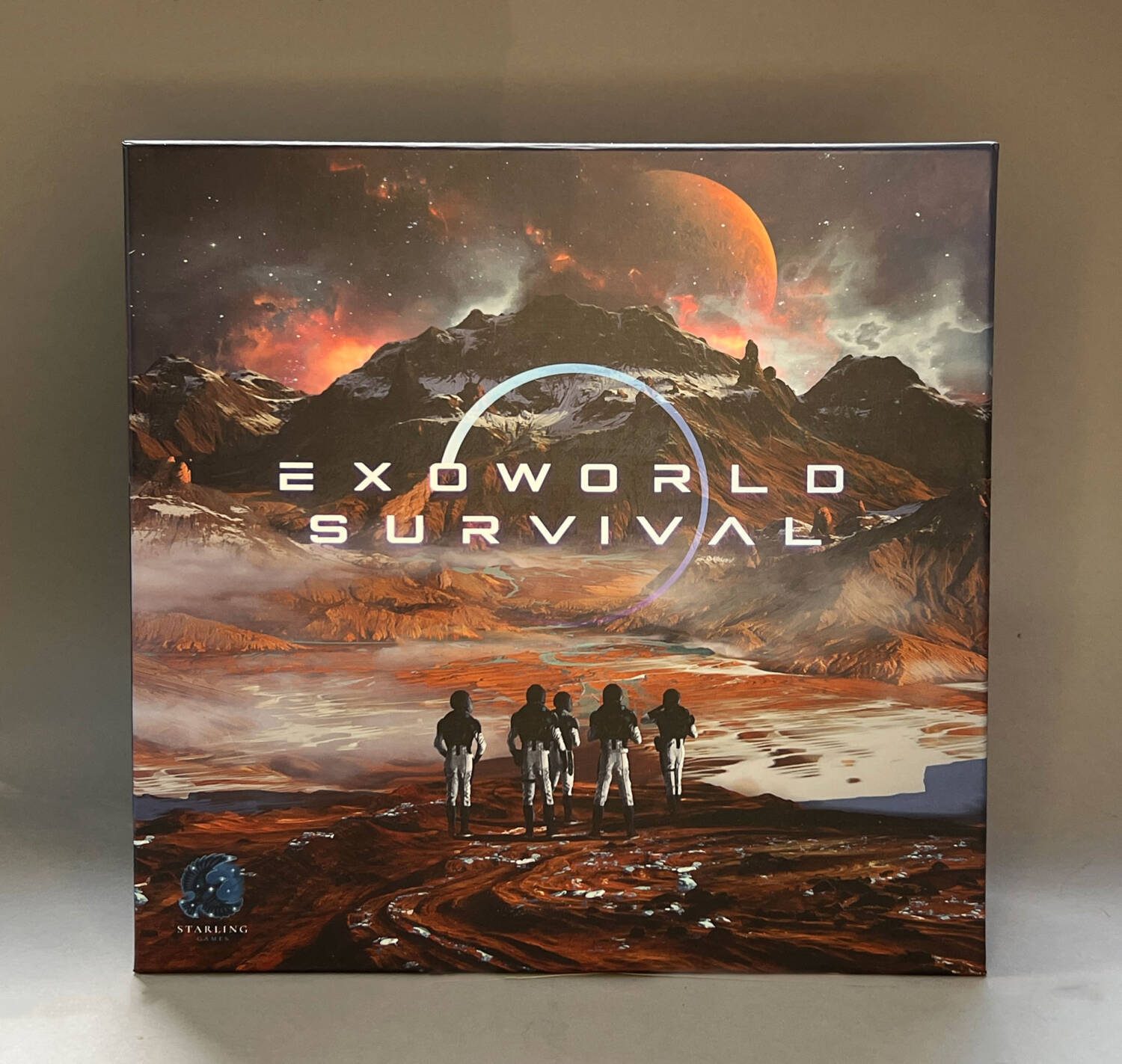
Setup
You’ll start each game by choosing one of the eight scenarios (nine with the included expansion scenario) to play. Each milieu has different starting conditions for your four production types and your emergency supplies, as well as settings for the Event Deck and the effects of certain Event cards.
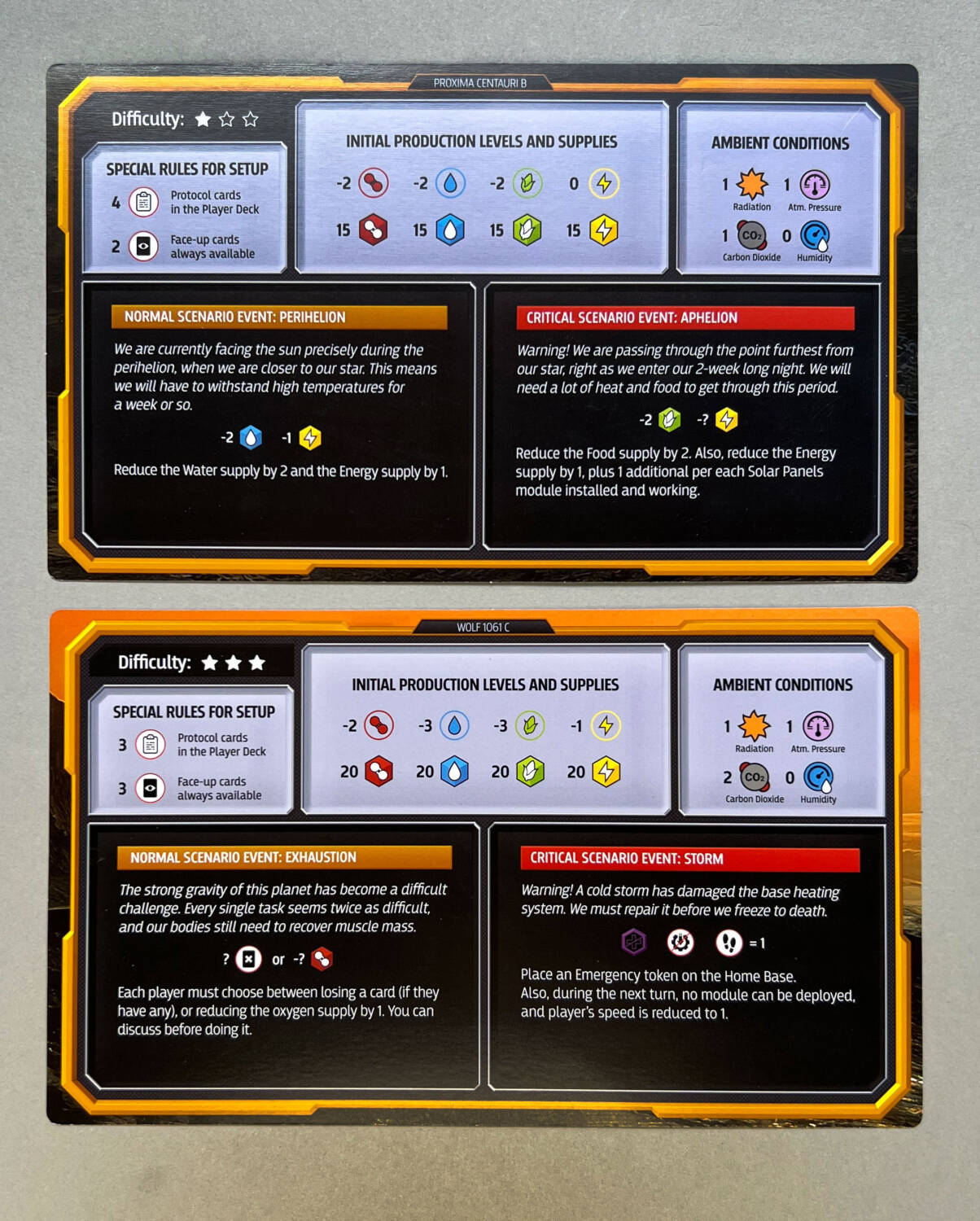
Place the Resource Board on the table. Take each of the colored discs and cubes and match them to their respective places on the Resource Board, based on your chosen scenario.

Deal out two Character cards to each player. Decide which of the two unique character abilities you’d like to play in the game and return the other to the box.
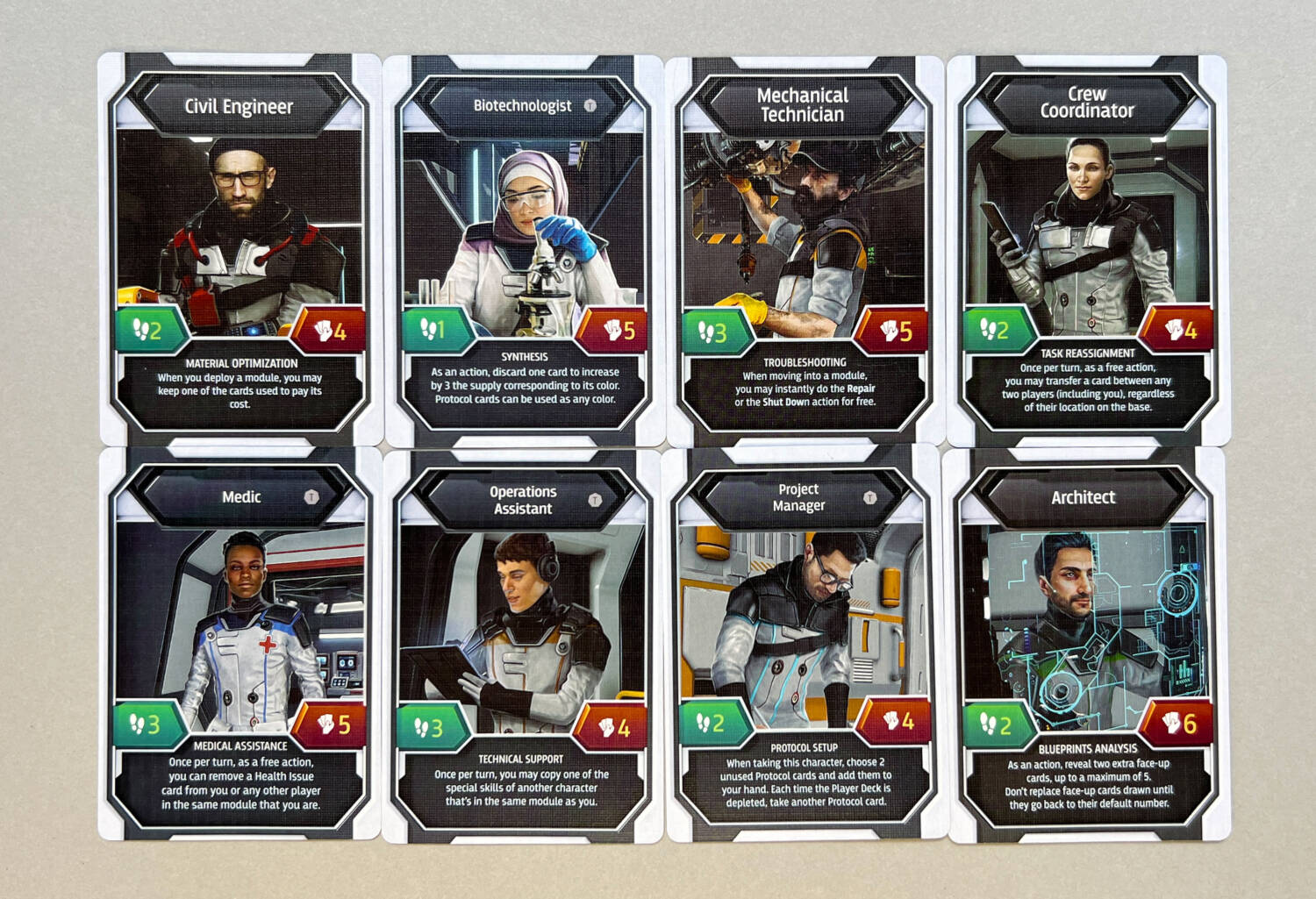
To create the Player Deck, start by removing all the special use Protocol Cards. Check the scenario card to see how many random Protocol Cards to add back in, then shuffle the deck. Deal two cards out to each player, then set out a number of cards face up beside the deck as stated in your scenario.
Mix a select number of Critical Events into the Standard Events cards, based on the criteria also listed in the scenario.
Take the Home Base card and place it in the center of the table, within easy reach of all players. Each player takes a colored, wooden pawn and places it on the Home Base.

And now you’re ready to play.
Playing the Game
On a turn, you can perform up to four actions from these possibilities: draw a card; discard all face-up cards and replace them with new cards; give/receive a card with another player, provided you’re both on the same module (card); deploy a new module; move to an adjacent module; increase the supply of the module your token is on; shut down or repair a damaged module; perform your character’s special ability.
Playing Project cards to build new modules is how you increase your colony’s Production levels of the four resources. To build a new module, you need to have the module card and the number of cards in the colors indicated along the left edge of the card. Once built, you’ll immediately increase that resource’s Supply on the Supply board. However, most of these modules will increase one resource at a cost to another resource.
After taking your actions, you’ll draw a card from the top of the Event deck. Standard Events will range from disabling your character, to damaging modules in your colony (thus eliminating their production capability), to enacting the Damage indicator on the scenario you’re playing.
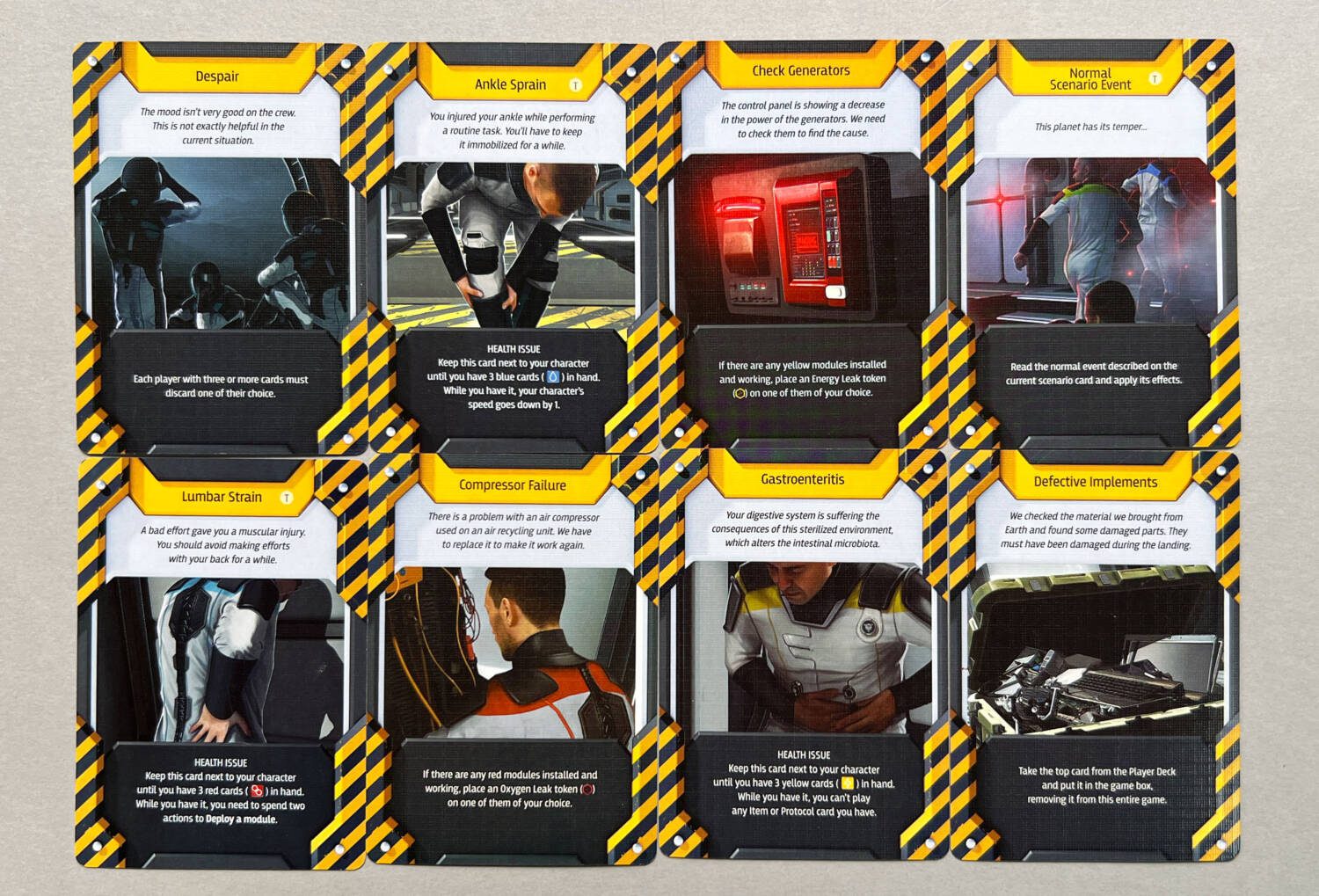
If you’re unlucky, you’ll draw one of the Critical Event cards. These are always very bad, ranging from damage inflicted upon 2-3 modules to reducing your Supply of one of the four resources.
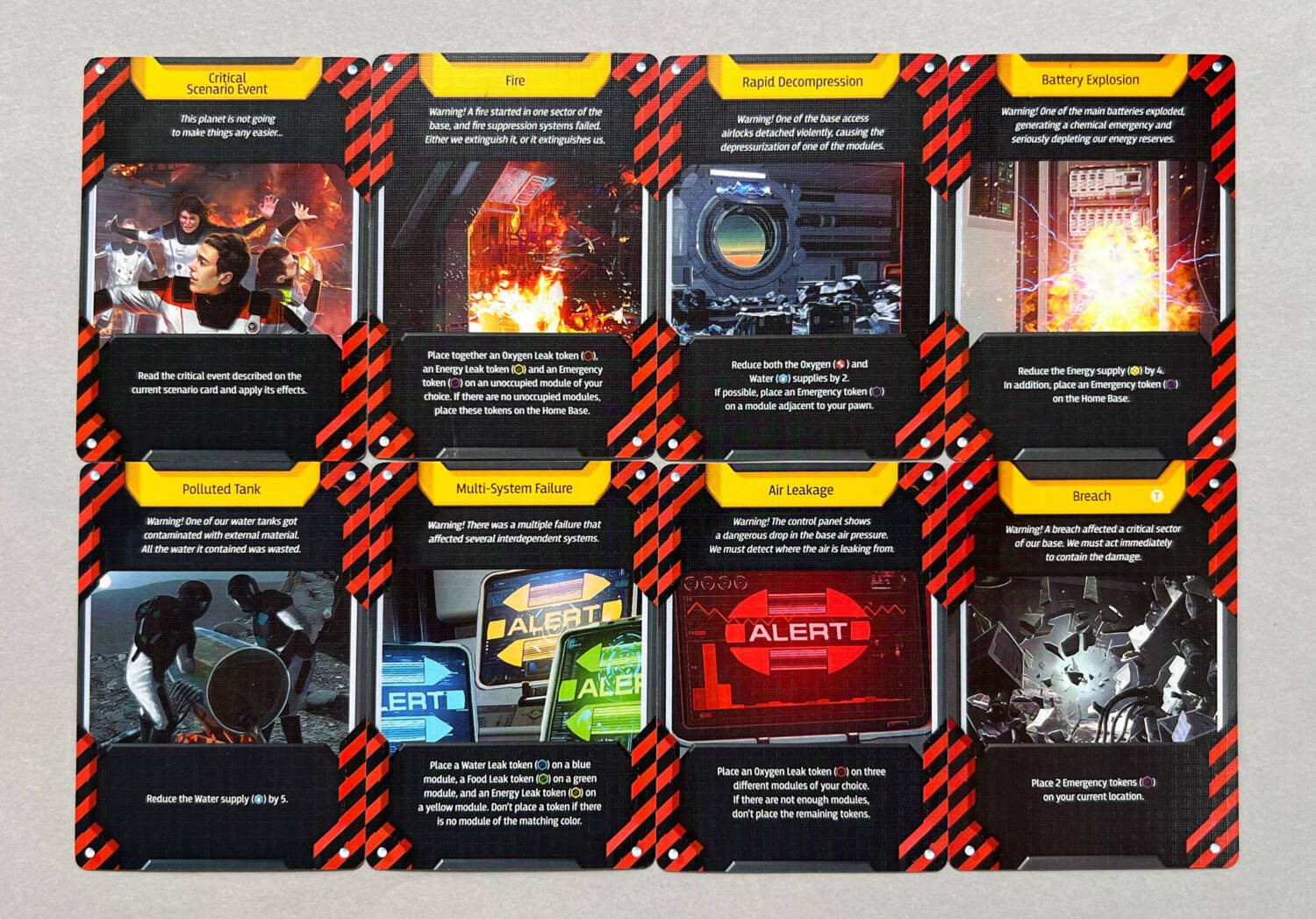
After resolving the effect of an Event card, you’ll look at the Production rate of your four resources on the Production board. For each one that is in the minus rows (and there are far more minus rows than plus rows), you need to dip into your Supplies, meaning you’ll move the square cubes down accordingly. If a Supply ever hits zero, any further supplies of that type must come from your Emergency Supplies.
Play will continue in this way until you have either managed to raise all four of your Production levels to zero or higher (you win!) or you run out of Emergency supplies (you die a cold, airless death far, far away from home).
Thoughts
As I said in my review of another cooperative game, Burgle Bros., my long-time friend and member of my weekly gaming group, Paul Cardullo, describes cooperative games as, “Bad things happen, then you die.”
Tthe best cooperative games I’ve played have a shared tension created by the game’s theme and mechanics. An important point: in my favorite plays of Pandemic and Burgle Bros., as the conditions on the board became more and more dire, we still felt we had a chance of winning the game. With the right planning and a bit of luck involved, we felt we were still in it. (Ever won Pandemic on the last card? I have. It felt glorious.)
The tension in cooperative games comes from knowing the game rules are always stacked in favor of the game. A well-designed cooperative game has playtested the rules to define that fine line between being too hard with being too easy. (Sure, we want to win. But we want to earn that win.) A poorly designed cooperative game is often ridiculously hard, with players knowing they have no chance of winning halfway through the game. (I’m looking at you, Ghost Stories!)
For me, Exoworld Survival falls in the latter camp.
I had heard that the suggested starting scenario was hard enough, and that proved correct. In all my test plays of a three-player game, supplies dropped quickly, and we were unable to come up with the necessary cards to boost those resources.
Between building modules that depleted a particular resource and the damage the colony took from Event cards, those games felt unwinnable. In fact, I suspect once the supply of any resource hits -3 you’re unlikely to have a chance at winning. If you’re dipping into your Emergency supplies, you might as well pack up the game and call it a day.
Counting Cards
Having run through the Project card deck in one game, I started to wonder about these cards as I reshuffled them. Something didn’t feel right about them.
With the Event cards, I found there are 35 Standard Event cards: seven that refer to the Event in the scenario in play, and 28 unique events. There are 15 Critical Event cards: five that refer to the Event in the scenario and ten with unique events.
The Project cards, the ones players will have to work with to win the game, are divided into four colors, one for each of the four resources you’re trying to get above zero to win the game. Each color has one Item card that grants a one time special action. The remaining 30 cards (7 food, water, oxygen; 9 energy) consist mostly of identical pairs of cards with one extra card. Where most Project cards take two other Project cards to convert into a module, these extra cards cost four cards and, on average, raise one Production by two, while decreasing another by 1.
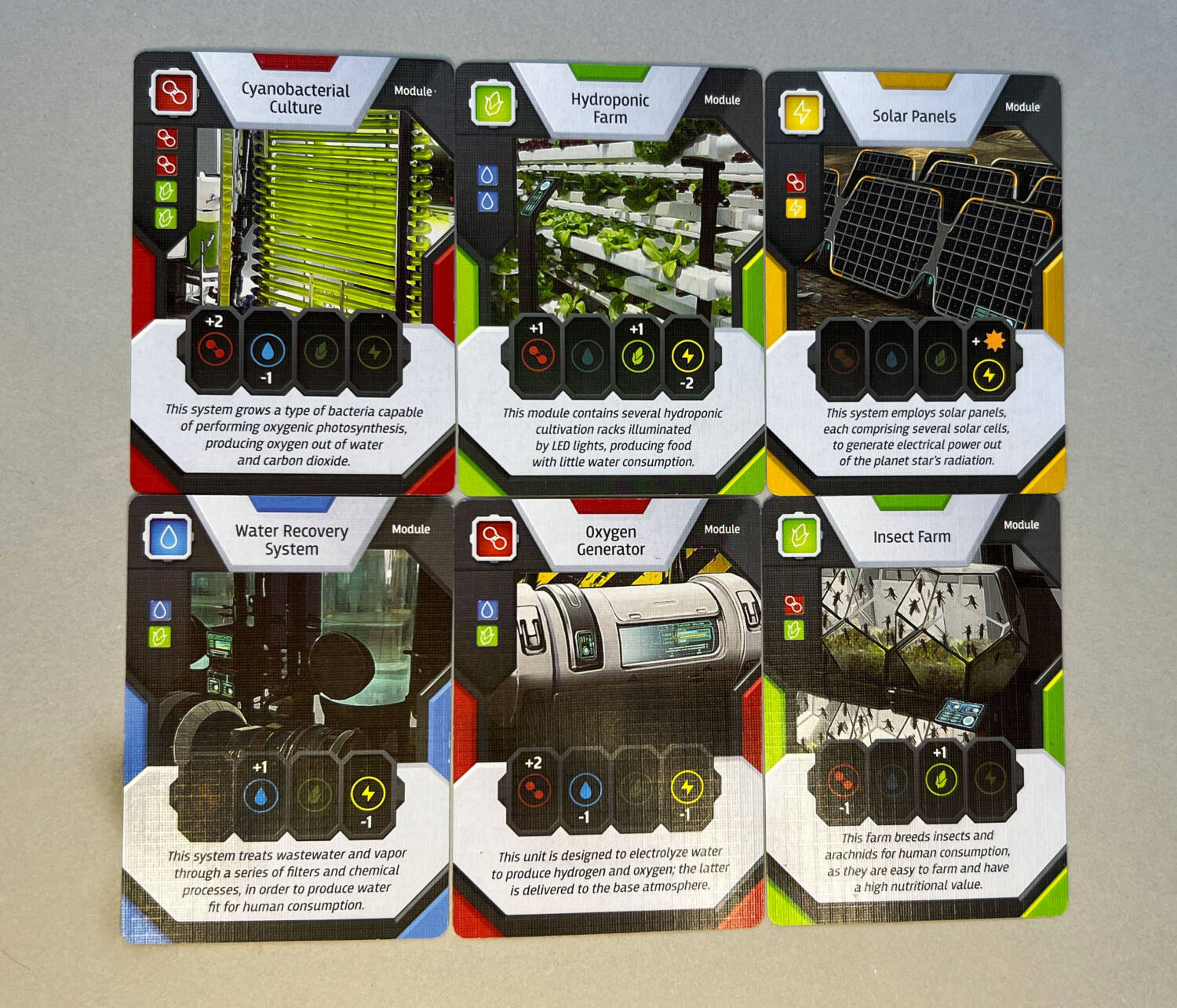
For the game to be balanced, I had expected to find the number of cards that raised or lowered a specific resource to be equal across the deck of 30 cards. Not so. Food cannot be decreased. Water is more likely to be increased than decreased (10:6), as is Oxygen (12:6). Energy is almost twice as likely to be decreased than increased (12:6).
Of course, many cards did not change the Production of the resources. Oxygen and Water were unaffected in almost half of the cards (12 and 14, respectively), while Food was unchanged in 23 cards.
Energy was the most affected, with 16 cards decreasing that resource. (From a thematic standpoint, this makes sense. Any new module built would require Energy to run.)
With this information, I tried a solo game (playing with three characters and a single hand of cards used by all three characters) and focused on only those cards that raised a single resource while avoiding those that reduced other resources. With that strategy and more than a little luck from a benign series of draws from the Event deck, I was able to win the game.
But winning isn’t everything. I didn’t enjoy the game, nor did I feel victorious with the win. Instead, I felt I had pulled back the curtain to reveal The Wizard of Oz to really be Frank Morgan.
I can’t say if Exoworld Survival is broken. I can say that winning it felt very unsatisfying. As with Rauha, a game I recently reviewed, Exoworld Survival requires me to play the game its way, rather than my way—which I don’t want to do. In this way, Exoworld Survival reminds me of a thrift store jigsaw puzzle: there’s one way of putting the pieces together, but you’re not sure if all the pieces are there.


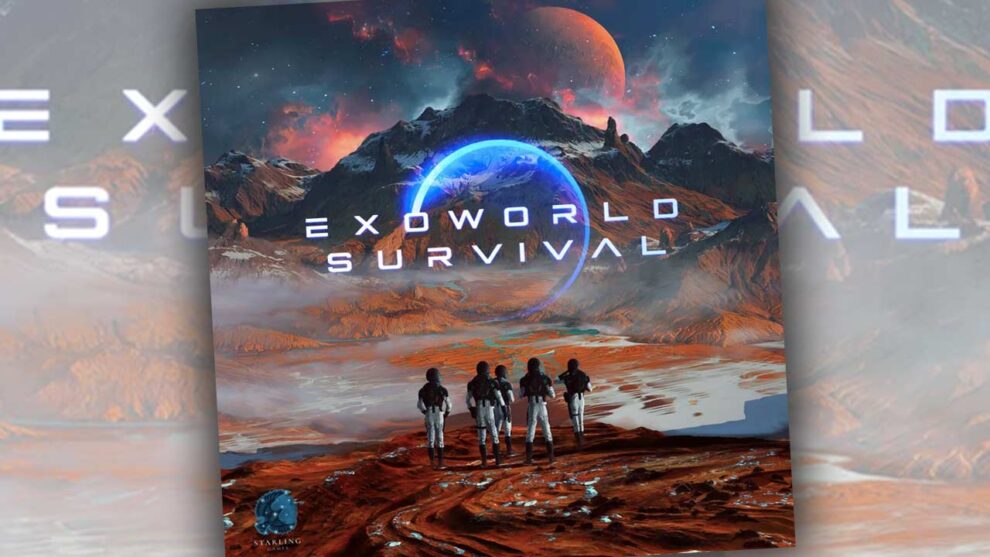

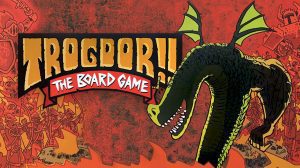







Add Comment